Perla vs. Diamant: Aký je rozdiel?
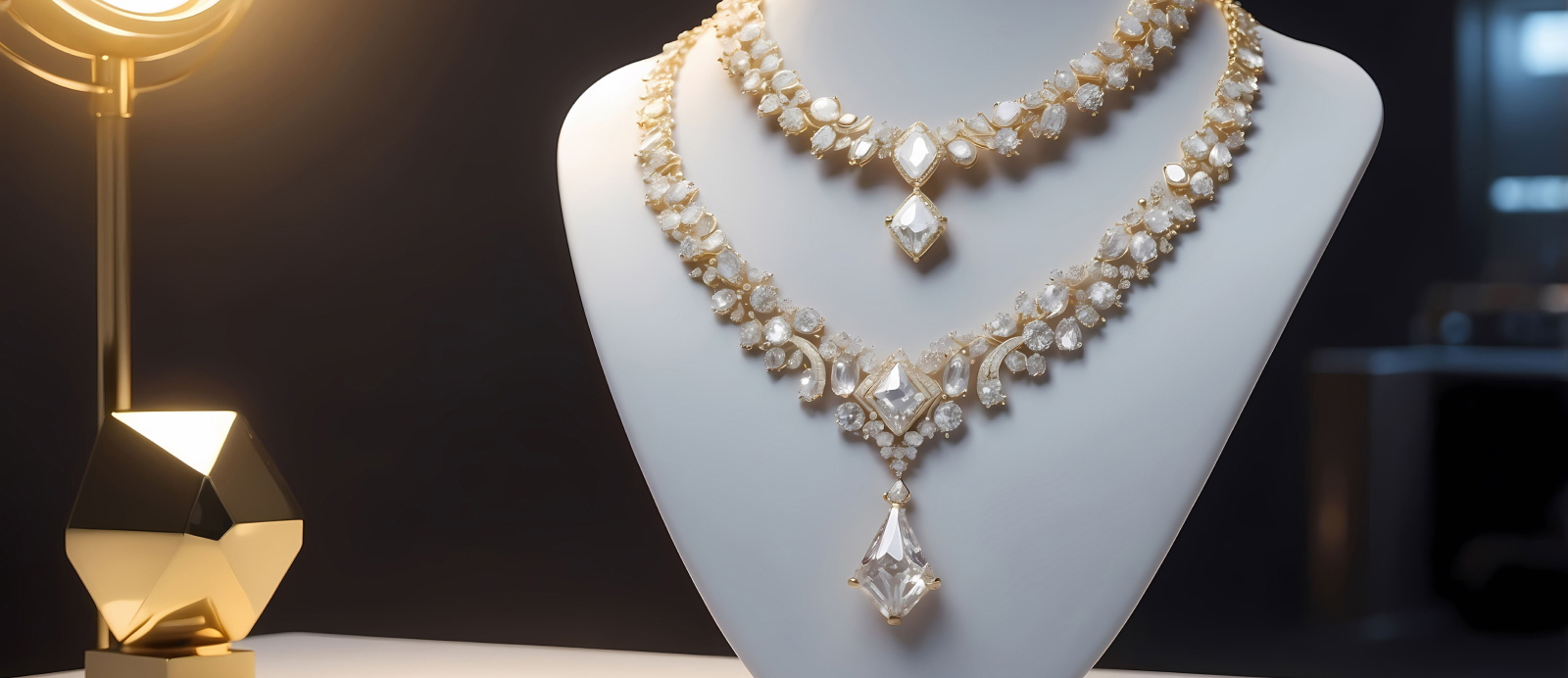
When it comes to precious jewelry, pearls and diamonds are two timeless classics that never go out of style. Both offer unique beauty and elegance, but which one is the perfect fit for your personal style? In this article, we'll explore the differences between pearls and diamonds, their origins, and how to choose the right gemstone for you.
Pearls
Where Do Pearls Come From?
Pearls, once considered a symbol of wealth and status, have captivated the world for centuries. These exquisite gems, formed within the shells of mollusks, are still highly prized for their unique beauty and elegance.
While pearls are more accessible today, their formation is a complex process. When a foreign object, such as a grain of sand or a parasite, enters a mollusk's shell, the creature's mantle coats the irritant with layers of nacre, a naturally occurring substance. This process can take several years to produce a pearl, with larger pearls often taking longer to form.
The type of mollusk, its environment, and the nature of the irritant all influence the size, shape, color, and luster of the pearl. Freshwater pearls, formed by mussels in lakes and rivers, are typically smaller and more irregular in shape than saltwater pearls, which are created by oysters in oceans and seas.
Today, the most common types of pearls are:
- Saltwater:
- Natural
- Cultured
- Freshwater:
- Natural
- Cultured
- Artificial
Cultured pearls, while not entirely natural, are still considered real gemstones. They are created through a process of human intervention, but the pearls themselves are formed by the same natural process as wild pearls. The main difference lies in the controlled environment where cultured pearls are cultivated, which allows for greater consistency in size, shape, and color.
Although cultured pearls are more affordable than their wild counterparts, they are still valuable and prized for their beauty. In the past, pearls were considered a luxury item, accessible only to the wealthy. However, with the development of pearl cultivation, they became more widely available and affordable. Today, pearls are cultivated in many countries and remain a popular choice for jewelry.
Characteristics of Pearls
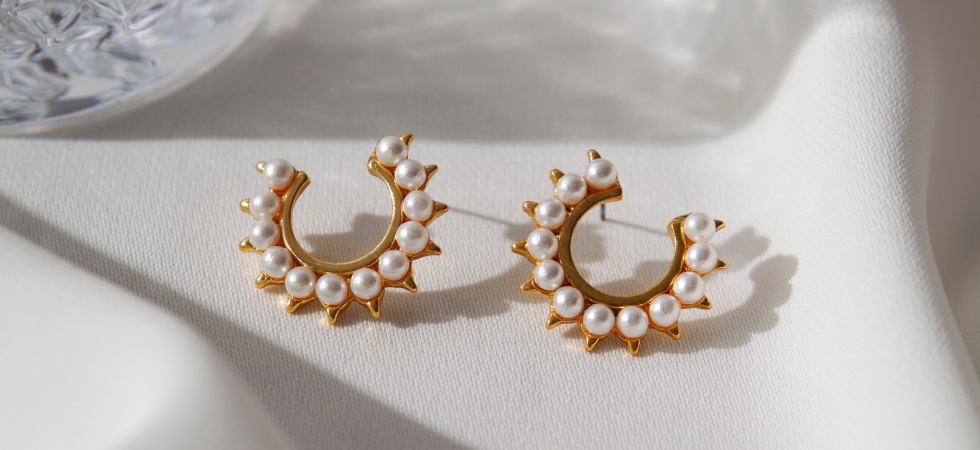
- Luster: Natural nacre refracts light, creating an incredibly beautiful iridescent glow. High-quality pearls exhibit a stark contrast between the brightest area, where light hits, and its darker portions, creating the illusion of a sphere within the pearl.
- Color: Pearls naturally come in various colors, including white, pink, peach, beige, purple, lavender, green, blue, gold, gray, chocolate brown, and black. Classic pearls are typically pure white or white with shades ranging from pink to cream. The color of a pearl depends on the mollusk's shell color. The perception of pearl color can be divided into three stages:
- Primary color
- Color tone
- Overtone – a secondary color visible in sunlight: according to the GIA system, overtones can be pink, blue, or green.
- Size: Size is determined by diameter and measured in millimeters. Large spherical cultured pearls are rarer, making them more expensive. The price of pearls starts rising sharply from 8 mm in diameter. Large pearls can reach up to 25 mm in diameter, with larger sizes typical of saltwater pearls.
- Shape: The shape of a pearl directly affects its price. Pearls with a more regular shape are valued higher. Slight irregularities, such as elongation or flattening at the poles, reduce value but are permissible.
Three main shapes of pearls are distinguished:
- Spherical
- Symmetrical
- Baroque
- Spherical pearls are the rarest in nature, making them more expensive. Baroque pearls, which have an irregular shape and have recently gained popularity, are also not commonly found in nature, making them costly.
Pearls are classified based on multiple criteria, and their combination determines whether a pearl is cheap or worthy of a place in a brooch, ring, bracelet, necklace, or collar.
Quality of pearls is graded from “lowest” - D, to “highest” - A.
- D quality: characterized by weak luster and numerous defects of various levels, with 2/3 of the pearl's surface being defective.
- C quality: good luster; defects cover less than 2/3 of the surface.
- B quality: good luster; defects are seen on only 1/3 of the surface.
- A quality: the highest grade, with no visible defects on the surface, and any slight damages occupying up to 10% of the area. Such a pearl shines beautifully.
High-quality jewelry usually features pearls of grades A and B. Grades C and D pearls are not typically used in quality products.
Grade does not depend on size; rather, larger pearls have defects and flaws more visible: large pearls fall outside grades, valued for their size and rarity rather than color or luster.
Diamonds
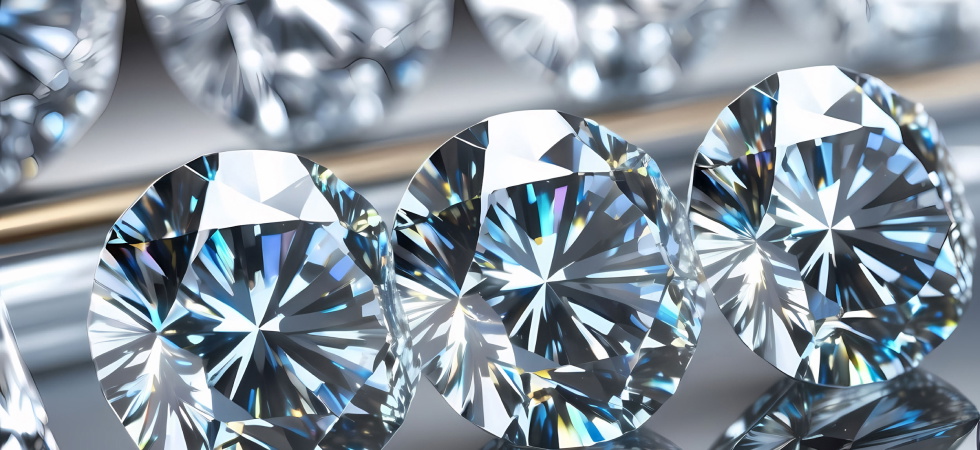
Diamonds are the most sought-after gemstones. Diamond jewelry is considered the most luxurious and prestigious.
Diamonds form naturally deep beneath the Earth's surface but can also be made in laboratories by diamond manufacturers. Natural diamonds are composed of pure carbon, formed about 150 kilometers below the Earth's surface. The diamond formation process occurs over millions (or even billions) of years in molten rock in the Earth's mantle, where pressure and temperature allow carbon to transform into diamonds.
Thanks to innovative technologies, you will find several ethical and quality diamond options and alternatives to mined diamonds, including:
- Lab-grown diamonds: chemically identical to mined diamonds.
- Diamond simulants: artificial materials that can replicate nearly every aspect of a mined diamond.
These options maintain the beauty and elegance of diamonds while being eco-friendly and ethically sourced.
Characteristics of Diamonds
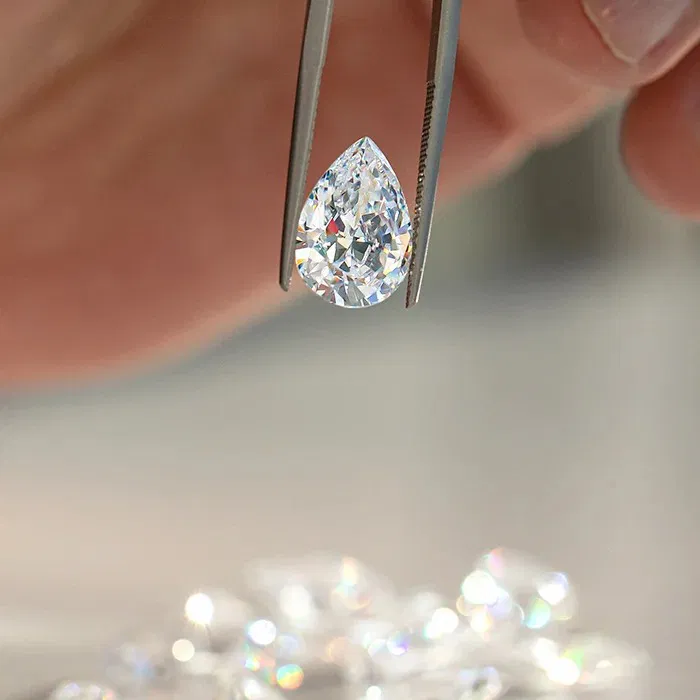
The characteristics of diamonds are described by the 4Cs classification: carat, cut, clarity, color.
- Carat – The term "carat" comes from the carob tree's seeds, which weigh 0.2 grams, equivalent to 1 carat. The larger the diamond's carat weight, the heavier and larger the stone, with the price of diamonds rising exponentially as carat weight increases.
- Cut – Besides the round shape, there are several diamond cutting shapes. Each is beautiful in its way. The round cut is believed to provide the best light play, followed by the square princess cut. Generally, round diamonds are priced higher than other shapes.
- Color – Pure carbon, the composition of a diamond, is colorless, while inclusions and the presence of other elements impart color to the diamond. For example, blue and green hues come from boron molecules, yellow and orange from nitrogen, and rare green diamonds accumulate gamma and beta rays. When referring to white or colorless diamonds, a simple rule applies: the more colorless the diamond, the more valuable and expensive it is. The color of diamonds is categorized into 23 groups, labeled with Latin letters from D to Z, where letters closer to the start of the alphabet indicate a purer color.
- Clarity – The clarity of a diamond depends on the presence or absence of spots and flaws. They are often graded by gemologists on a scale from flawless (no spots) to included (having visible flaws under magnification). Less than 1% of stones boast absolute clarity.
Clarity grading ranges from SI2-SI1 (small inclusions) to IF (flawless).
Often, buyers begin purchasing diamonds at the SI2 and SI1 clarity grades, as these provide maximum brilliance while minimizing costs.
Types of diamond cuts:
1. Round Cut
- Shape: Circular, symmetrical.
- Details: The most popular and traditional diamond shape. A round cut has 58 facets, maximizing light reflection for optimal brilliance.
2. Princess Cut
- Shape: Square or rectangular with pointed corners.
- Details: Popular for engagement rings, it offers a modern, elegant style with brilliant faceting similar to a round cut but in a square shape.
3. Emerald Cut
- Shape: Rectangular with cropped corners.
- Details: This cut features step-cut facets (longer, more open facets), emphasizing clarity rather than brilliance. It has a unique "hall of mirrors" effect.
4. Cushion Cut
- Shape: Square or rectangular with rounded corners (like a pillow).
- Details: Known for its soft, romantic shape, the cushion cut has large facets that enhance brilliance. It has a vintage charm.
5. Oval Cut
- Shape: Elliptical.
- Details: Similar to a round cut in terms of brilliance but elongated, making fingers appear longer and slimmer.
6. Marquise Cut
- Shape: Long, narrow with pointed ends.
- Details: A football-like shape that maximizes carat weight, making the diamond appear larger. It adds length to fingers.
7. Pear Cut
- Shape: A combination of round and marquise, with one pointed end and one rounded end.
- Details: A teardrop shape that is versatile and flattering for rings and pendants.
8. Asscher Cut
- Shape: Square with cropped corners (similar to emerald cut but square).
- Details: The Asscher cut has step-cut facets like the emerald cut, creating a vintage feel. It showcases clarity and depth.
9. Radiant Cut
- Shape: Rectangular or square with cropped corners.
- Details: Combines the elegance of an emerald cut with the brilliance of a round cut, offering extra sparkle.
10. Heart Cut
- Shape: Heart-shaped.
- Details: Symbolizing love, the heart cut is a romantic and bold choice. It requires precision to ensure symmetry.
Comparison: Pearl vs. Diamond
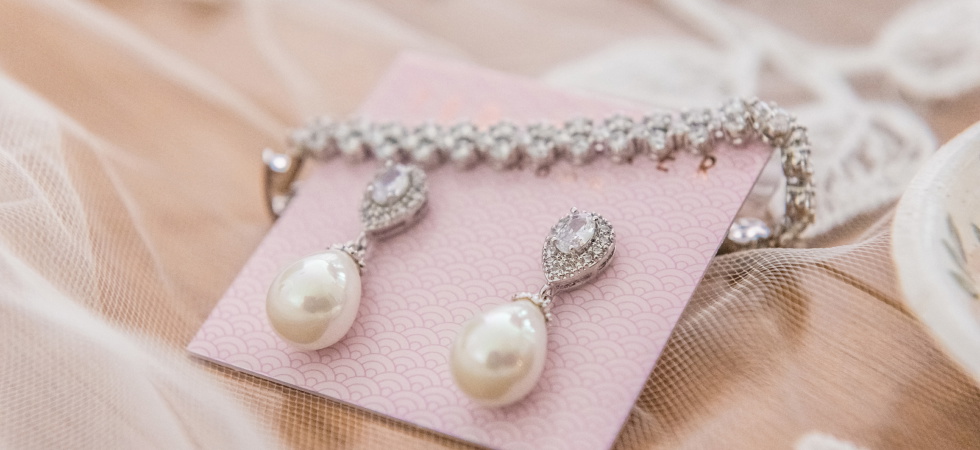
Comparing the price of pearls and diamonds can be tricky because they differ greatly in terms of rarity, origin, treatment, and how their value is assessed.
Pearls:
- Cultured Freshwater pearls (the most common) range from €50 to €500 per strand.
- Akoya pearls: €300 to €10,000 depending on size, luster, and quality.
- South Sea pearls: €1,000 to €100,000+ (larger and more lustrous).
- Tahitian pearls: €500 to €25,000+.
Diamonds:
- Small diamonds (0.25 carat): €500 to €1,000.
- 1-carat diamond: Prices can range from €2,500 to €20,000 depending on the 4Cs (cut, clarity, color, and carat weight).
- High-quality diamonds (2 carats and above) can range from €15,000 to €150,000+.
If you’re looking for a long-term, durable investment, diamonds are generally a better option. For elegant, timeless beauty with a lower price point, cultured pearls can be an excellent choice.
Engagements Rings: Pros and Cons of Pearls and Diamonds
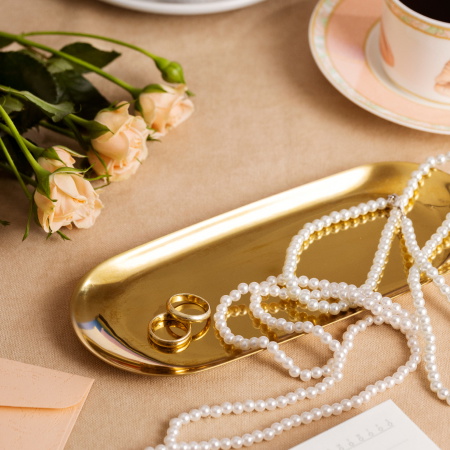
Pearls pros:
- Unique and Elegant – pearl engagement rings are less common than diamond rings, making them a unique, eye-catching choice. They have an elegant, vintage appeal, ideal for someone who values sophistication and understated beauty.
- Affordability – cultured pearls tend to be more affordable than diamonds, making pearl rings a good option for those looking for a unique, budget-friendly engagement ring.
- Symbolism – pearls are often associated with purity, wisdom, and serenity, making them meaningful for an engagement ring.
Pearls cons:
- Durability – pearls are much softer than diamonds (2.5–4.5 on the Mohs scale) and can easily scratch, chip, or lose their luster over time. This makes them less practical for everyday wear.
- High Maintenance – pearls require special care and regular maintenance to keep their shine. Exposure to chemicals, perfumes, or even sweat can damage them, and they need to be stored carefully to avoid scratches.
- Longevity – over time, pearls may lose their luster or become worn down, especially if worn daily. They don't last as long as diamonds and are more prone to showing signs of wear.
Diamonds pros:
- Durability – diamonds are the hardest natural material, scoring a 10 on the Mohs scale. This makes them incredibly durable for everyday wear, and they resist scratching and damage.
- Brilliance and Sparkle – diamonds are famous for their brilliance and light reflection. Their sparkle makes them a stunning focal point, especially for engagement rings.
- Symbolism – diamonds are often associated with eternal love, strength, and unbreakable bonds, which align with the themes of engagement and marriage.
- Variety in Cuts and Styles – diamonds come in a wide range of cuts (round, princess, emerald, etc.), allowing for diverse styles, settings, and personalizations.
Diamonds Cons:
- Cost – diamonds tend to be much more expensive than pearls, especially larger or higher-quality stones. The cost increases significantly with carat size, clarity, and cut.
- Ethical Concerns – some diamonds, particularly those from conflict regions, may raise ethical concerns (though many are now certified as conflict-free). Lab-grown diamonds are a more ethical and affordable alternative.
- Popularity – because diamonds are the traditional choice for engagement rings, they can be seen as less unique compared to pearls. Some people may prefer a more distinctive option.
Suitable occasions for each gemstone
Pearls: Occasions
1. Weddings
Pearl necklaces, earrings, and bracelets are traditional accessories for brides, particularly for classic or vintage-style weddings. Pearls offer a soft, romantic glow that complements the traditional white or ivory bridal attire.
2. Formal Events
Pearls add a touch of class and sophistication, making them perfect for formal dinners or galas. Pearls enhance formal outfits without overpowering them, giving a polished and refined look
3. Business and Professional Settings
Pearls offer understated elegance that is ideal for business meetings, corporate events, or professional attire. Pearls are subtle yet chic, projecting professionalism and sophistication in the workplace.
Diamonds: Occasions
1. Engagements and Weddings
Diamonds are the traditional gemstone for engagement rings and wedding bands, symbolizing eternal love and commitment. Diamonds are associated with durability and strength, making them the perfect symbol of everlasting love.
2. Formal and Black-Tie Events
Diamonds add luxurious sparkle to formal events such as galas, award ceremonies, or high-end parties. Their brilliance and sparkle make diamonds the centerpiece of any formal outfit, exuding glamor and prestige.
3. Milestone Celebrations (Birthdays, Anniversaries, Graduations)
Diamonds are often given to mark important life milestones like significant birthdays (18th, 21st, 50th), anniversaries (especially the 60th "Diamond Anniversary"), or graduations.
4. Festive Occasions (Holidays, New Year's Eve, etc.)
Diamonds add sparkle and excitement to festive occasions, particularly those involving celebrations and parties. Their brilliance mirrors the joy of holiday celebrations, making diamonds a go-to choice for standing out at parties.
Choosing Between Pearls and Diamonds
When it comes to choosing between pearls and diamonds, each gemstone offers its own unique beauty, symbolism, and appeal. The decision may seem daunting, but it’s an exciting opportunity to explore different styles and find the one that resonates with your personal taste, the occasion, and your budget. Find the perfect match exactly for you using our article!
FAQs:
– Are pearls real gems?
Yes, pearls are real gems, but they are organic rather than mineral-based. They are formed inside mollusks when layers of nacre are secreted around an irritant. Unlike traditional gemstones like diamonds, pearls are unique in their natural formation and soft luster.
– Which is more valuable, a pearl or a diamond?
Generally, diamonds tend to be more valuable than pearls due to their rarity, durability, and demand in the jewelry market. The value of both gemstones can vary significantly based on factors like size, quality, and type; for instance, high-quality South Sea pearls can be quite expensive. However, in certain cases, particularly with unique or rare pearls, their value can rival or exceed that of some diamonds.
– Are pearls suitable for everyday wear?
Pearls can be worn daily, but their softness means they are more susceptible to scratches and damage. It's best to choose freshwater or more durable pearls for regular wear.
– How can I tell if a diamond is real or fake?
You can test a diamond's authenticity through methods like the fog test (seeing how quickly it clears fog), checking for reflections, or using a diamond tester. Professional gemological evaluation is the most reliable method.
– What is a diamond's hardness rating?
Diamonds are rated 10 on the Mohs scale, making them the hardest natural substance. This hardness means they are highly durable and resistant to scratches.
– How do I care for and clean pearls?
Pearls should be wiped with a soft cloth after wearing to remove oils and dirt, and they should be stored separately to prevent scratching. Avoid exposure to harsh chemicals, perfumes, and excessive moisture.

